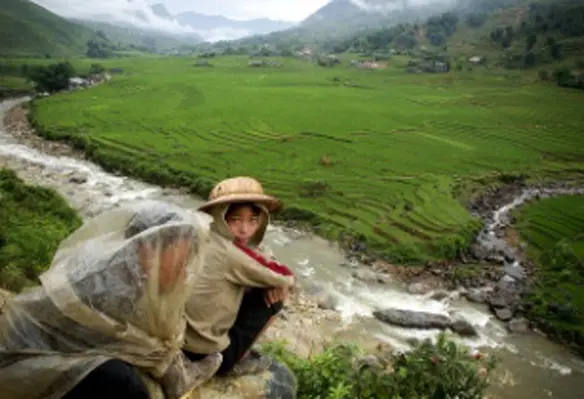After years of steady decline, child labour in agriculture has started to rise again in recent years, threatening efforts to end global hunger and poverty, according to FAO as it observed World Day Against Child Labour
According to FAO, nearly half of all child labour in the world now takes place in Africa (72mn), followed by Asia with 62mn.
The number of child labourers in agriculture worldwide has increased substantially from 98mn to 108mn since 2012 after more than a decade of continuous decline, according to the latest estimates. Prolonged conflicts and climate-related natural disasters followed by forced migration have pushed hundreds of thousands of children into child labour.
Households in Syrian refugee camps in Lebanon, for example, are prone to resort to child labour to ensure the survival of their family, said FAO.
Therefore, FAO said that the efforts to eliminate child labour in agriculture face persistent challenges, due to rural poverty and the concentration of child labour in the informal economy and unpaid family labour.
Zero Hunger is only possible with Zero Child Labour
FAO stresses that child labour in agriculture is a global issue that is harming children, damaging the agricultural sector and perpetuating rural poverty. “Children who work long hours are likely to continue to swell the ranks of the hungry and poor. As their families depend on their work, this deprives the children of the opportunity to go to school, which in turn prevents them from getting decent jobs and income in the future,” said Daniel Gustafson, deputy director-general at FAO.
“Since more than 70 per cent of child labour worldwide takes place in agriculture, it is vital to integrate child labour into national agricultural policies and address the issue at the household level. Otherwise, it will further exacerbate poverty and hunger in rural areas. We need to break this vicious circle if we want to achieve progress towards the Sustainable Development Goals. Zero Hunger is not possible without Zero Child Labour,” he added.
A wider approach to eliminate child labour
FAO and its partners are trying to end the dependence of family farms and enterprises on child labour through improving skills of especially small family farmers, providing access to inputs and credit, especially for women, and implementing sustainable agricultural practices in order to improve productivity and make smallholder farms viable enough to employ adults in decent work. The organisation also supports countries in integrating child labour in national policy, legislation, programmes and strategies.
In Lebanon, FAO has developed a short visual story about the dangers of pesticides for younger children, who are potentially illiterate. It focuses especially on Syrian refugee children. The agency is also working on a mobile app in the form of a game, which looks at risks and hazards associated with different agricultural settings such as horticulture, field crops and greenhouses.
In Uganda, FAO, in coordination with the Ministry of Agriculture, Animal Husbandry and Fisheries and the Ministry of Labour, Gender and Social Development, organises trainings for local agricultural extension workers, labour officers, secondary school teachers and students to promote safe work for youth and prevent hazardous child labour in agriculture in several districts, including refugee-hosting communities in the West Nile.





